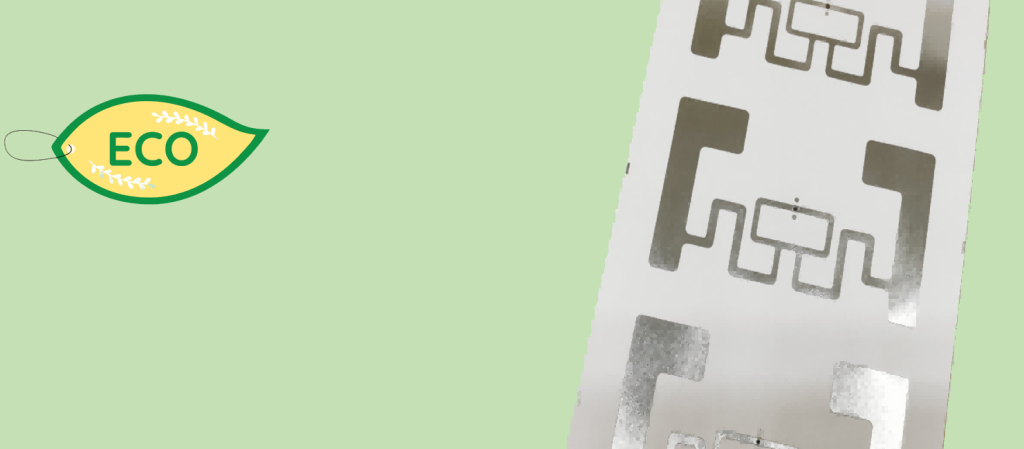Governments and regulatory bodies across the globe are increasingly implementing environmental regulations and standards. The use of RFID sustainable tags for apparel is becoming increasingly popular day by day, surpassing the use of normal RFID labels.
RFID sustainable tags are designed with eco-friendly materials and production processes, which align with the growing global concern for sustainability. As consumers become more conscious of the environmental impact of their purchasing decisions, apparel brands are opting for sustainable labeling solutions to demonstrate their commitment to responsible practices.
There is a rising demand for sustainable products, including apparel, from environmentally conscious consumers. By using RFID sustainable labels, brands can appeal to this market segment and differentiate themselves from competitors. Consumers appreciate and prioritize brands that actively contribute to environmental preservation, fostering loyalty and positive brand perception.
Adopting RFID sustainable labels helps apparel brands enhance their reputation and build a positive brand image. By visibly showcasing their commitment to sustainability, brands can attract like-minded customers who value eco-friendly choices. This can lead to increased customer trust, loyalty, and positive word-of-mouth recommendations.
By utilizing RFID sustainable tags, brands can distinguish themselves from competitors and appeal to environmentally conscious customers seeking sustainable choices. This provides a competitive advantage and strengthens the brand’s position in the market.
As sustainability becomes a mainstream concern, incorporating RFID sustainable tags positions apparel brands for long-term success. It ensures alignment with evolving consumer preferences, changing regulations, and industry trends. By embracing sustainable practices, brands can future-proof their business and remain relevant in a rapidly evolving market.
Overall, the use of RFID sustainable tags for apparel offers numerous benefits, including environmental responsibility, meeting consumer demand, enhancing brand reputation, ensuring regulatory compliance, enabling supply chain transparency, improving operational efficiency, gaining a competitive edge, and preparing for the future. These factors contribute to the increasing adoption of RFID sustainable labels in the apparel industry.
The critical test of RFID Sustainable Tags is to replace the PET etching RFID which is stable, heat resistant, and consistency. All in one word, the key point is how to fix the aluminum film precise and accurate with tiny tolerance, especially in the chip bonding position. Laser die-cut is a good way but low productivity. While mechanical die-cut is fast but need special process to make a slot for micro-chip crossing. That is why we propose coupling RFID inlay. Separating the RFID inlay into near field antenna and far field antenna for speedy mass production purpose. And might be assembling RFID inlay at customers’ side in the future. Electronic printing could be a solution but it is fragile and unstable in usage, only for short period RFID applications.
What Eco solution can JYL-TECH offer?
We can provide aluminum antenna inlay by laser die-cut and coupling mechanical antenna.
What is the used antenna technology? Laser die-cut Al? Etched paper/Al? Graphene ink? Or other method?
Both laser die-cut and mechanical die-cut are by aluminum.
Printing circuit antenna is almost quit by out experience these years.
Can JYL-TECH offer patent to RFID Sustainable Tags?
Yes, we have patent by our partners, all these processes had been proofed by big clients in Europe and US.
What is production capacity to RFID Sustainable Tags?
Production capacity to laser die-cut is 35 million monthly. Production capacity to mechanical die-cut could be 150 million monthly, and 4-6 months later all antenna is made by aluminum.
How is Eco RFID tag’s performance compared with Al etching RFID tag?
Final structure of green RFID inlay is made of only paper and aluminum whose key features and advantages to the green RFID tags are as follows:
- With paper face stock support, substrate can be eliminated.
- Steady performance, which is barely affected by the adherend’s materials.
- Easily to make tamper proof tag.
- Green RFID tags are with less weight than Al etching RFID tags.
What is charge to RFID Sustainable Tags compared with AL etching RFID tags?
Prices are very similar when quantity is more than 5 millions.
What about the eco-friendly antenna design?
Coupling RFID UHF Tag: One type of core loop can match well with several far field antennas. JYL-TECH offers several well-performed inlays for your optional. Furthermore, it only takes about 7 to 10 days for antenna design which is much shorter than AL etching RFID antenna.
Laser Die-Cut RFID UHF Tag: Antenna design is similar but slight adjusted based on the performance.
Contact Form
We can help you?
Share this page

